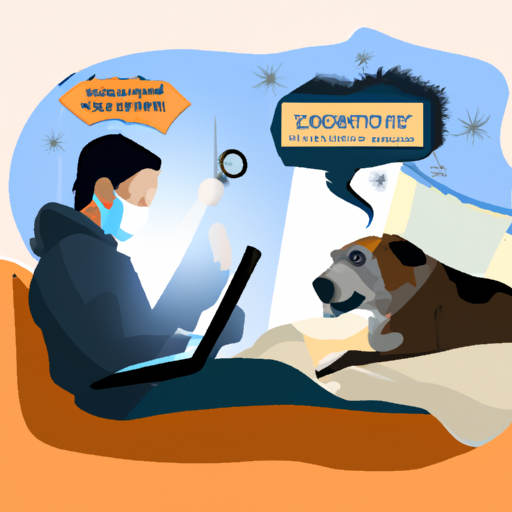Understanding Canine Distemper
You’ve probably heard the term “distemper” thrown around by veterinarians and fellow pet owners, but do you really know what it is? Canine distemper is a contagious and serious disease caused by a virus that attacks your dog’s respiratory, gastrointestinal, and nervous systems. It’s a grim reaper, lurking in the shadows, ready to strike when your dog’s defenses are down.
How Is Distemper Transmitted?
Your dog can contract distemper through direct contact with an infected dog or wild animal. The virus is airborne; it’s as simple as a few shared sniffs or a friendly lick. Even indirect contact, such as sharing food bowls or toys, can lead to transmission.
In some cases, puppies can contract the virus from their mothers. The virus is crafty and resilient, capable of surviving in the environment for hours, maybe even days. This means your beloved pet could contract the virus from an infected area, even if an infected dog is no longer present.
| Ways of Transmission | Likelihood of Occurrence |
|---|---|
| Direct Contact | High |
| Indirect Contact | Medium |
| From Mother | Low |
Symptoms of Canine Distemper
Recognizing the signs early can be a lifesaver. Symptoms may initially mimic a common cold, with a high fever, eye inflammation, and nasal discharge. As the disease progresses, more serious signs emerge, such as vomiting, diarrhea, and neurological issues like seizures. If your dog shows any of these signs, it’s crucial to seek veterinary help immediately.
-
Early Symptoms
- Fever
- Eye inflammation
- Nasal discharge
-
Advanced Symptoms
- Vomiting
- Diarrhea
- Seizures
Preventing Canine Distemper
The best strategy against distemper is prevention. Vaccination is your dog’s armor, their invisible shield against this dangerous virus. Puppies usually receive a series of vaccines starting at six weeks of age, with boosters given every three to four weeks until they are 16 weeks old.
Apart from vaccination, good hygiene practices can also help prevent the spread of the virus. Regularly disinfect shared spaces and items, and avoid contact with unfamiliar dogs, especially if they appear sick.
Treatment for Canine Distemper
Canine distemper is a tough opponent, but it’s not invincible. The battle begins with supportive care to help your dog’s immune system fight off the virus. This may include IV fluids, antibiotics to prevent secondary infections, and medications to control symptoms like vomiting or seizures.
Remember, the best treatment is prevention. Arm your dog with regular vaccinations, a clean environment, and prompt veterinary care when illness strikes.
FAQs
Q: Can humans get canine distemper?
A: No, humans cannot contract canine distemper. It’s a disease specific to animals, primarily dogs and some wild animals.
Q: How long does distemper last in a dog?
A: The length of the disease varies, but it can last several weeks or even months. Rapid treatment and supportive care can improve the prognosis.
Q: Can a dog survive distemper?
A: Yes, with early diagnosis and aggressive supportive care, some dogs can survive distemper. However, they may have long-term effects from the disease.
Q: Is there a cure for distemper?
A: There’s no specific cure for distemper. Treatment is focused on managing symptoms and supporting the dog’s immune system.
Q: How can I protect my dog from distemper?
A: Regular vaccinations and good hygiene practices are the best ways to protect your dog from distemper. Avoid contact with sick or unfamiliar dogs as well.



